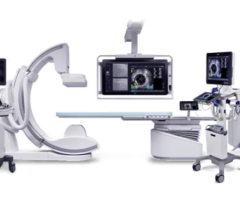May 27, 2014 — Terumo BCT has entered into a business relationship with Kaneka to gain market authorization in the United States for the use of the Terumo BCT Spectra Optia Apheresis System with the Kaneka Liposorber LA-40S LDL Adsorption Column for cardiologists treating patients with high cholesterol.
Through this new agreement, Terumo BCT and Kaneka will collaborate to seek the required approvals for the use of the Spectra Optia system and the Liposorber column to treat patients with coronary heart disease and severe hyper cholesterolemia, thereby expanding clinical treatment options for clinicians in the United States.
Key Facts on the Regulatory Pathway:
- Kaneka will seek to obtain Investigational Device Exemption (IDE) for the Liposorber column
- Terumo BCT will support the IDE application by providing data references for the Spectra Optia device, the Spectra Optia SPD Holder and the Spectra Optia SPD-C Connection Set
- Terumo BCT and Kaneka will collaborate on a U.S. clinical trial that is planned to evaluate the Liposorber column when used with the Spectra Optia device
- When the clinical trials are complete, Kaneka will submit a pre-market approval (PMA) application for the Liposorber column and Terumo BCT will submit a 510(k) for Spectra Optia Therapeutic Plasma Exchange (TPE) with a Secondary Plasma Device procedure (TPE-SPD procedure)
- The devices are expected to be used together in the treatment of patients with severe hypercholesterolemia once the necessary regulatory approvals are obtained
Key Facts on the Patient Condition:
- High LDL cholesterol (LDL-C) levels in the blood significantly increase the risk of coronary heart disease and heart attacks
- LDL-apheresis, when performed with an LDL adsorption column that binds to and removes LDL-C from a patient’s plasma, is a treatment option for high-risk patient populations — such as those with familial hypercholesterolemia (FH) for whom diet, exercise and drug therapies such as statins have either been ineffective, or not tolerated
- The number of FH patients in the United States is more than 600,000; it is estimated that 12,000 of these patients are unresponsive to standard therapies [1]
- Despite the prevalence of FH and the availability of effective treatment options, FH is both under diagnosed and undertreated [1]
- When LDL-apheresis is prescribed, it is usually performed once every two weeks, or once per week in severe cases
For more information: www.terumobct.com, www.kaneka.co.jp/kaneka-e/
References:
1. Goldberg, A “Familial Hypercholesterolemia: Screening, Diagnosis and Management of Pediatric and Adult Patients.” The Journal of Clinical Lipidology 2011; 5: 133–140.


 December 20, 2023
December 20, 2023 








